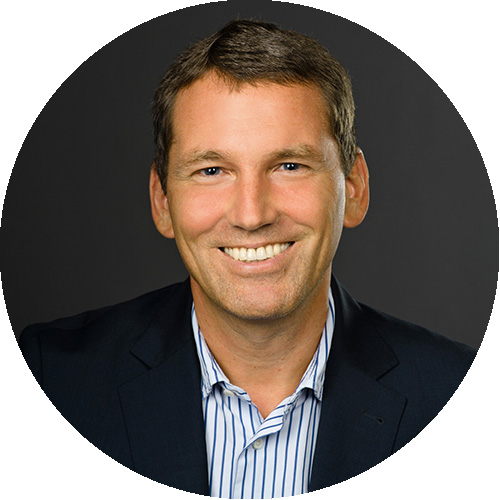
Experience report from Mag. Gunther Fürstberger, CEO of MDI Management Development International.
At the end of 2016, a big car manufacturer invited us to help with the implementation of the OKR system – objectives and key results. It is important to us that our work is based on personal experiences. Therefore I decided to implement OKR at MDI from the beginning of January 2017.
2016 was not a very successful year for us anyway. We did not achieve our sales target and had a higher staff turnover than wanted. Responsibilities were not clear, employees were overstrained, the productivity was decreasing, the conflict culture was aimed at prevention and the management was not very happy about that.
Together with OKR, we introduced a new team structure and a rolling budget. The new team structure contributed to the reduction of complexity as it reduced the number of contact persons for the employees and trainer at MDI. The “rolling budget forecast” helped us to get rid of this rigid annual plan, which is usually out-of-date after the first quarter already. It gives us the possibility to adapt our resources to current developments.
At the same time, there are different kinds of views on the realization of OKR. I opted for an agile 80% approach: even though not everything was prepared yet, we started nevertheless. I visited a one-day-seminar, watched a series of YouTube videos, for instance about the implementation at Google, and defined some important cornerstones to start with the implementation of the OKR system.
Levels:
- Organization level,
- Individual OKR’s with the people who report to the managing level,
- Individual OKR’s of all other employees with their executives
Amount of the objectives: 3 – 5 objectives, max. 4 key results per objective
Ambition: achievement of objectives: 70%
Transparency: Google document and a poster with all the OKR’s in our kitchen: everyone can see each other’s OKR’s and grading, as well the achieving objects of the management.
Frequency: every quarter

Monthly meetings give employees the chance to talk about their individual objectives and to see where everybody stands at the moment
Meeting structure
OKR meeting:
- Frequency: every quarter
- When? Just before the new quarter starts (4th Thursday before the end of the quarter)
- Duration: 6h meeting (from 10 am – 5 pm with a lunch break)
- Purpose: to assess the company’s OKR’s from the quarter and define new ones
- Who: one representative of all divisions: all in all 6 people
All hands meeting:
- Frequency: monthly
- When: 4th Thursday of a month at 10 am.
- Duration: 30 minutes
- Purpose: every employee talks about their OKR’s and where they stand at the moment
- Who: every employee
Individual OKR meetings:
- Frequency: every quarter
- When: last week or first week of the quarter
- Duration: 1h
- Purpose: check and definition of your personal OKR‘s
- Who: every employee with his/her executive
Jour Fixe:
- Frequency: every or every second week
- When: agreed individually
- Duration: 30min
- Purpose: check of the OKR’s and support for your everyday working life
- Who: every employee with his/her executive
In December I wrote a temporary strategy for 2 years and invited the representatives from the most important divisions at MDI to the first company OKR meeting. We did not have an OKR-master back then (role as driving force, meeting moderator), therefore I was the presenter of the first meeting.
The meeting was planned to last 6h and we needed every single minute but we achieved quite a lot in the end:
- We had one “volunteer” who wanted to take over the role of the OKR-master
- We worked together on a concept “how OKR should look like at MDI”
- We defined 4 objectives with each 4 key results
- About 60% of the final OKR’s were suggestions from the team, the rest was suggested by the management
Even though we were quite exhausted afterwards, we were convinced that the OKR’s can help us to focus on the essential things. We put a poster in our kitchen with the OKR’s, which we wrote down on 4 flipcharts, our mission-vision-value-statements and our 2 years strategy. From January on we started with our individual OKR meetings. We only had one hour to define individual objectives but it worked out in the end.
To set priorities and to formulate ambitiously, measurable key results was quite an effort but saved us valuable time in the end because we knew exactly what our focus was.
We wanted to know more about OKR and therefore our OKR master attended a 3-day OKR-master-training at another institute and came back with a lot of new ideas.
Some of them were for instance:
- A preparation template for the “all hands meetings” to increase their relevance.
- Team OKR’s instead of individual OKR’s for every employee
- Starting with the second quarter, we defined 3 objectives with each 3 key results instead of 4 objectives and 4 key results.
My colleague will explain more about this in another blog article.
Current results evaluation:
It looks like 2017 is going to be the best year in the company’s history. The incoming orders rose by 26% compared to the previous year. The profit has more than doubled and the staff turnover has decreased. However, the challenge now is the expansion and development of the team to keep up with the current growth. Let’s see how the journey continues.
What serves you next?
What are the benefits of the OKR system?
What are the benefits of the OKR method and how does it work exactly? MDI trainer and OKR master Susanne Spath gives us an introduction and a story to visualize the OKR method.
Agile leadership - orientation and basics
There are plenty of agile methods – but what are the benefits of each method? MDI trainer Alexandra Sock talks about her agile leadership seminar, which gives you an overview of different agile methods.
Scrum & Agile leadership
Scrum is one of the oldest agile methods and is the mother of all agile methods in many people’s opinion. Susanne Spath is OKR master and Scrum certified gives us an introduction to this method and tells us for whom it makes sense to implement Scrum.




